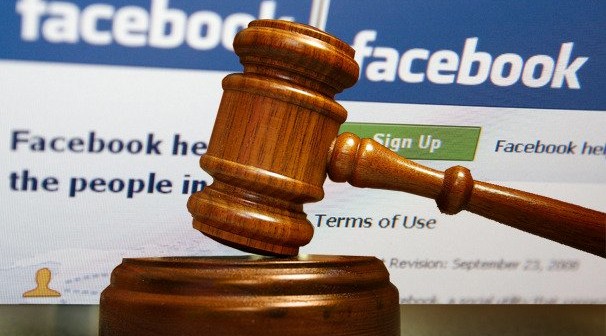The 2012 edition of the Digital Music Report[1] has been issued while the main players have launched new services, new comers are developing business models, incumbent companies have been involved in extraordinary corporate operations.
In particular, Apple has presented the iTunes Match service which allows the subscribers to upload in the cloud service and against the payment of a US$ 25 fee up to 25.000 tracks coming from any source (including tracks pirated from P2P downloading). This allows to get an upgraded version of the tracks and – this is quite an innovation – to substitute (“launder”) the pirated files with original tracks[2].
Spotify has launched its streaming service in Belgium, Austria and Switzerland (it is now in 12 countries) and has recently closed a deal with Facebook which will enable US residents to stream the music tracks and to share it with the network.
Last but not least, EMI has been acquired by Universal Music Group while EMI Music Publishing repertoire has been purchased by Sony. Both the operations shall be scrutinized by the competition authorities in US and EU. The final result will be a further concentration of the market to a smaller number of major companies controlling most of music contents.
Obviously, there would be lots of news that would worth to mention anyway these well represent the scenario of a market which has progressively changed.
In this framework it is interesting to examine the Digital Music Report 2012 of IFPI (International Federation of the Phonographic Industry), organization representing the recording industry worldwide.
This ninth Report puts in evidence on the one hand an 8% increase in the digital revenues (US$ 5.2 billion). On the other hand it underlines a decline in the overall recorded music market, which fell 3% (US$ 16.2 billion).
In general this might be read with an optimistic approach as facts and figures reflect the dynamism of the market itself:
– there is an increase of paying subscribers to services such as Spotify and Deezer (more than 13 million);
– some markets now gets more than half of their revenues from digital distribution including US (52%) and China (71%);
– in 2011 the users have purchased more than 3.6 billion downloads registering an increase of 17%.
The evolution of the market has lead to the definition of two main consumption models – access and ownership – complimentary and aimed to create a consumer tailored service with the purpose to offer an added value experience.
The ownership is the traditional model where the physical store is replaced by digital platform and virtual catalogues.
Access is based on the opportunity to use the content without own the file. This is often offered through subscription models, integration with social media or partnership with ISP and telecommunication companies delivering bundled services.
The main business model is the “freemium” which combines an initial advertising supported distribution – used a free tier aimed to acquire the customers – and a subsequent premium and pay access.
Notwithstanding the creation of new services and new business models, the greatest challenge for the record industry is still constituted by the piracy and the copyright infringement.
According to IFPI and Nielsen, more than one in four (28%) of internet users access unauthorized services (both P2P and non P2P services) on a monthly basis.
IFPI observes that countries should promote the implementation of anti-piracy legislation and at the same time education and warning measures. These should be the ingredients of an effective contrast to copyright infringement.
The model, in IFPI opinion, is represented by the system of graduated response already implemented by the French legislator with the HADOPI Law.
In fact, the French authority, HADOPI[3], is entitled to screen internet connections “in order to prevent the exchange of copyrighted material without prior agreement from the copyright holders”. In particular it may initiate a procedure based on three strikes:
i) In the event of an infringement, HADOPI sends an email message to the user specifying the time of claim. At this stage the ISP is invited to monitor the user who is invited to install a filter. If the infringement is repeated in the next 6 months then the second phase of the procedure applies;
ii) HADOPI sends a formal letter whose content substantially reproduce the email message. If the user refuse to comply the third step applies;
iii) HADOPI requires to restraint the internet access to the user for a limited period (from two months to one year). The user is included in a blacklist and all the ISP are not allowed during that period to provide such user with an internet connection.
The user may appeal to a court after the suspension of internet access. The burden of proof is on the appellant[4].
The graduated response approach is considered “effective in changing consumer behavior”. The adoption in France would have lead to a 26% reduction of P2P usage and to a positive impact on iTunes sales in France, with an increase of 22,5% for singles and 25% for album[5].
For the sake of completeness, it must be mentioned that HADOPI law and the graduated system still receives negative opinions all over the world: the opponents consider the disconnection from the internet (even if justified by the infringement of intellectual property) as a violation of the freedom of expression and more in general a disproportionate measure.
The music industry also considers positively the cooperation between the online intermediaries (ISP, payment providers, advertisers, search engines, etc.) and sees it as one of the key factor leading to effectively counteract the piracy. The enforcement of rights would need an environment where every player gives its contribution.
In particular, IFPI notes that search engines are often used as means to find music contents[6] and in this respect suggests a closer cooperation between the music industry and search engines in order to adopt practices and procedures aimed to prevent the infringement and to speed up the responses and the removal of non-legal links.
In addition IFPI remarks that several music sites illegally distribute contents to the users adopting advertising based models generating revenues from the sale of advertising space which allow those websites to build a profitable business. In the Limewire case has been estimated that in 2006 Limewire would have earned US$ 20 million in advertising revenues.
IFPI solicits companies to make their best effort in order to remove their advertisements from illegal sites. The media agency Group M (WPP Group) has developed a new strategy by identifying a blacklist of websites distributing pirated contents which should prevent that commercial messages are distributed through illegal websites.
Finally, IFPI underlines it is crucial the collaboration with the payment providers. IFPI reports that in UK a partnership with the City of London Police is preventing the abuse of payment services for illegal purposes.
In general, such collaborations would be addressed to suppress the business of all those websites and companies which do not comply with the rules of the game.
Many countries are discussing the implementation of legislation providing anti-piracy measures and basically the proposal laws SOPA and PIPA – which have generated massive contrasts and critics – are based on the assumptions above.
The real challenge for the local legislators will be to protect the intellectual property by introducing reasonable remedies and proportionate measures. The goal should be to strike a balance between the fundamental rights involved (privacy, freedom of expression, etc.) and in general to adopt a prudent strategy which takes into consideration the different interests of all the parties involved: content industry, ISP, search engines, payment providers, end users, etc.
It will also be crucial to support education programs finalized to promote the respect of intellectual property rights which often are not perceived as a product of an industry but as a good infinitely available and transferable without any particular restraint or fee.
Obviously it is required a long term effort starting from the new generation but without lose sight of the older which needs to be correctly informed through massive campaign.
Putting aside the copyright issues, the final matter will be the capacity for the music industry to propose products and models which will be able to convince the users to access the contents lawfully and not through illegal websites and means. In this circumstances cloud platforms might be a new challenge for music industry. Or maybe a big opportunity.
[1] http://www.ifpi.org/content/library/DMR2012.pdf
[2] Actually any metadata which identifies the pirated files can only be removed manually.
[3] Haute Autorité pour la diffusion des œuvres et la protection des droits sur internet; in English “High Authority for Transmission of Creative Works and Copyright Protection on the Internet”
[4] Hadopi law does not exclude the separate ordinary remedies provided by the law and in particular by the Code de la propriété intellectuelle.
[5] This is the same conclusion expressed in the study titled “The Effect of Graduated Response Anti-Piracy Laws on Music Sales: Evidence from an Event Study in France” (http://papers.ssrn.com/sol3/papers.cfm?abstract_id=1989240) by Brett Danahen (Wellesley College of Massachusetts), Michael D. Smith, Rahul Telang (Carnegie Mellon University della Pennsylvania) and Siwen Chen.
[6] The Digital Music Report states that according to Harris Interactive the 23% of consumers regularly download music using search engines as means to find contents.


